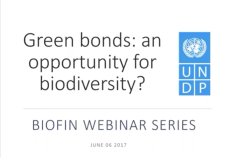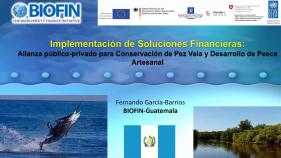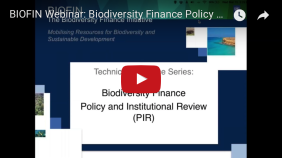
Biodiversity Expenditure Review (BER) was conducted within the framework of the Biodiversity Finance Initiative (BIOFIN) project. The review covered biodiversity expenditure from 2008-2018 incorporating political and economic impacts. BER analysis was conducted according to the BIOFIN Workbook methodology and included the annual expenditures by state and local budgets as well as the funds by the donor and international organizations. The economic status of Mongolia during this review period can be divided into two periods: (i) a period of regional and local economic crisis (2008-2010, 2013-2015); and (ii) a period of economic growth (2011-2012, 2016-2018).
During the crisis period, the fiscal policy focused on “reducing the budget and cutting out tolerable expenditures”, while the growth period aimed at “increasing the salaries of civil servants and pension funds step-by-step in accordance with the global economic growth and mineral prices”. In addition to reviewing the public budget expenditures on conservation-related activities, expenditures related to the projects on sustainable use of biodiversity, improvement of legal and regulatory frameworks, funded various donors or international organizations, were also analyzed. The consulting team has identified biodiversity relevant activities and stakeholders that contribute to achieving the goals and objectives of the National Biodiversity Program. Based on the stakeholders’ identification, the information was collected from 90 projects, of which 71 were implemented by 11 different organizations and the remaining 19 were by government agencies.
It was estimated that the total biodiversity expenditure during 2008-2018 was 207.7 million USD, which amounts to 0.35%-0.79% of total State budget expenditure and 0.15%-0.25% of the total GDP; and the average annual biodiversity expenditure was 13.3-25.5 million USD. Analysis of the annual expenditures showed that the most significant decrease of 12% and 21% was observed in 2012 and 2016, respectively, which can be attributed to the 15.3% and 42% decrease of the state budget. Although the total State budget expenditures increased by 21% and 7% in the respective years, the expenditure on deforestation was reduced by 3 folds in 2012 as compared to the previous year, while the specially protected areas (SPAs) expenditure was reduced by 21% in 2016. Both 2012 and 2016 were the quadrennial election years, thus suggesting that political activities affect the expenditures on biodiversity and conservation.
The most significant periods of growth in biodiversity expenditures were observed in 2013 and 2017, immediately after the decline from the previous election years. It can be explained by the direct increase of funding from the State budget, as it was normalized back to the pre-election period. The increased expenditure can also be attributed to the approval of a higher number of projects by donors and international organizations. Financing from State and local budgets account for 44.4% of the total funding for biodiversity expenditures, with the remaining 55.6% were provided by donors and international organizations.
The total biodiversity budget and expenditures largely depend on the revenue generation of the State budget. The public budget allocation related to biodiversity was categorized according to the strategic areas, goals, and objectives of the National Biodiversity Program and the Aichi targets. To reflect the impacts of the inflation rate in the biodiversity expenditure, actual exchange rates of each particular year was applied. Appendix 1 shows the detailed estimation of expenditures for 2008-2018 according to the goals and objectives



